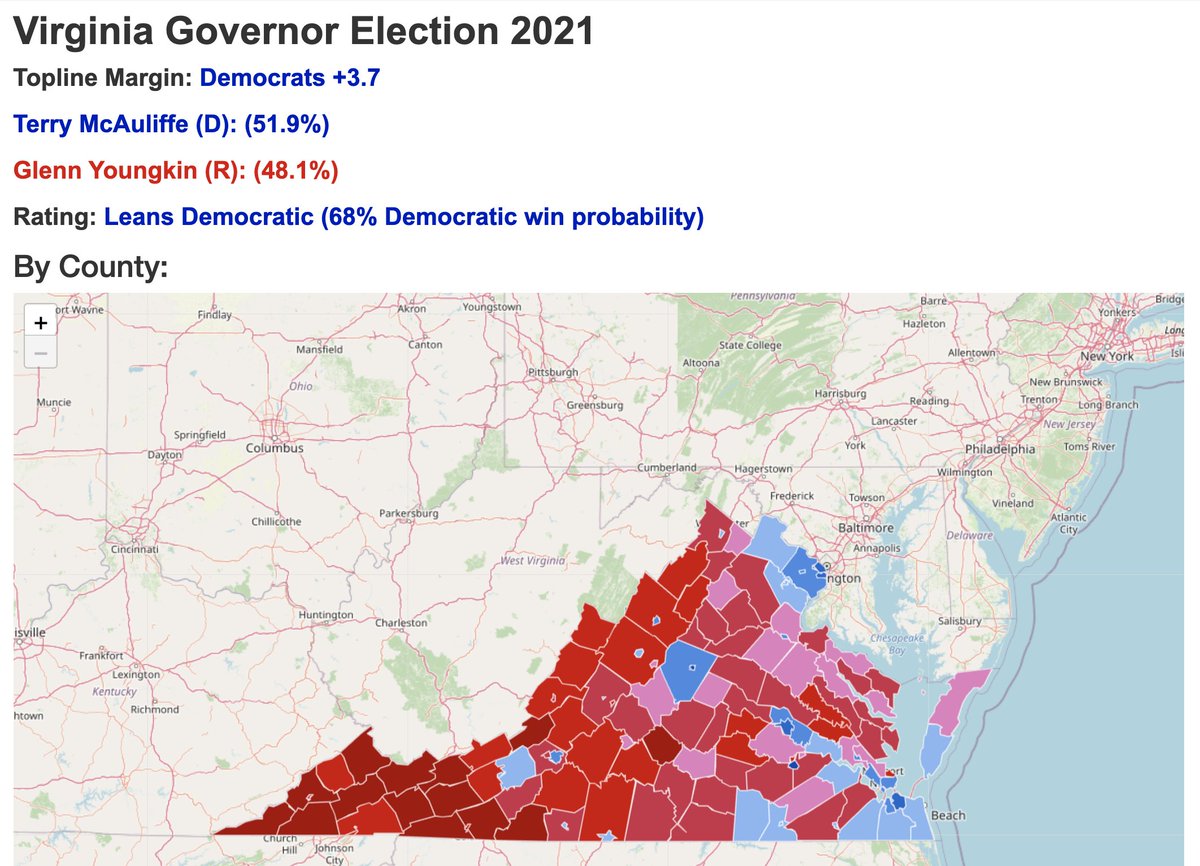
Looks like @Thorongil16 and I will end up on the wrong side of #VAGov predictions.
We took a shot, tried to be transparent about what we did, and ended up giving Youngkin a 33% chance of victory. Those things happen 1/3 of the time. Forecasting and modeling is hard.
We took a shot, tried to be transparent about what we did, and ended up giving Youngkin a 33% chance of victory. Those things happen 1/3 of the time. Forecasting and modeling is hard.
Some success for the model: as @Thorongil16 said, we did appear to catch the fact that there would be significantly more college-educated voters in this electorate than in 2020, and modeled the electorate decently well. Where we missed was in margins among demographics.
I don't feel bad for saying polls like Fox were bad. The electorates illustrated by those never materialized. We always said Youngkin's path to victory would consist of flipping a ton of Biden voters, including white suburbanites. And that's what he managed to do.
That said, we ended up actually taking just about all of those polls into our model anyways, so the model missed even while taking them. We really just rejected Emerson (for using MTurk) and some internals (like Trafalgar, and I don't feel bad for rejecting Trafalgar).
This appears to be a case in which Republicans have won by flipping a *lot* of Biden voters across the board. I don't think Democrats lost this race primarily through disaffected voters sitting out -- they lost it b/c lots of Biden voters voted R. That's our biggest model miss.
I did outline exactly what Youngkin needed to do in the threads: persuade a lot of upset Biden voters. We just didn't model him as actually doing it in the median case. But Loudoun's only D+11 (14 pt swing right)!
Looks like he did it -- he's clearing @Thorongil16's benchmarks.
Looks like he did it -- he's clearing @Thorongil16's benchmarks.
These misses happen, and we weren't the only ones forecasting a D win. Regardless, I hope I (and @Thorongil16) have been kind, respectful, humble, and open in terms of what we've been doing, how these assumptions could break, and what the uncertainty we're dealing with was.
This isn't the last time I'll be wrong, but we knew what we were dealing with and what we were modeling, and we tried to quantify uncertainty. Sometimes the median case doesn't happen, and you can take a shot and miss. We'll learn.
Till next time, then. Thanks for following.
Till next time, then. Thanks for following.
• • •
Missing some Tweet in this thread? You can try to
force a refresh






